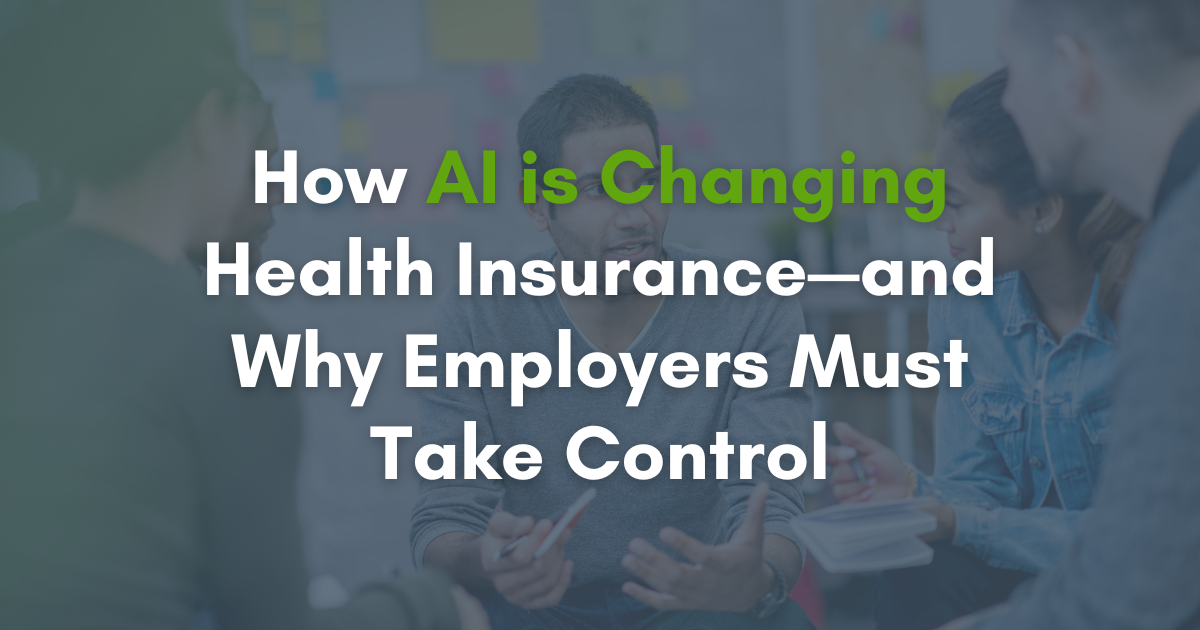It’s no secret that health insurance carriers often prioritize profits over patient care. For years, insurers have been criticized for using tactics like claim denials, prior authorization delays, and restricted services to manage costs. Now, AI is amplifying these practices—and the implications for employers and employees are significant.
A recent investigation by the U.S. Senate revealed alarming details about how insurers use AI to deny necessary care. Employers with fully insured health plans have little to no ability to detect, prevent, or counteract such tactics. This reality underscores the urgent need for businesses to explore alternatives like self-funded health plans, which offer greater control and transparency.
AI Denials: A Numbers Game
According to the Senate subcommittee, leading insurers deployed AI to reject post-acute care recommendations at disproportionately high rates compared to other types of care between 2019 and 2022. These denials often targeted seniors recovering from falls, strokes, or other acute illnesses—leaving vulnerable patients without the care their doctors deemed necessary.
The findings, drawn from over 280,000 pages of documents, reveal that:
- AI tools are prioritizing cost savings over patient outcomes.
- Insurers are increasingly using AI to delay or deny care, effectively boosting profits at the expense of patient well-being.
- Vulnerable populations, such as seniors, are disproportionately affected.
Fully Insured Plans: Employers’ Hands Are Tied
For employers with fully insured health plans, these practices are nearly impossible to detect or prevent. Once claims are denied or services are delayed, employers and employees have little recourse. The lack of visibility into how claims are managed leaves businesses powerless to advocate for their employees or ensure they’re receiving the care they need.
This lack of control can lead to increased frustration among employees, decreased productivity, and higher turnover—all while employers continue to pay ever-increasing premiums.
The Solution: Consider Self-Funding
Now, more than ever, employers should consider partially self funded health plans — this is the only way to gain control over rising health plan costs and some visibility as to how claims are being paid.
1. Greater Transparency
With self-funded plans, employers gain access to claims data, allowing them to see how and why care is approved or denied. This visibility makes it easier to identify cost drivers and address inefficiencies.
2. Improved Control
Employers can customize their health plans to better meet the needs of their workforce. Unlike fully insured plans, where insurers dictate terms, self-funded plans put decision-making power in the hands of the employer.
3. Cost Management
By bypassing many of the built-in profit margins of traditional insurers, self-funded plans can lead to significant cost savings over time. Employers also have the flexibility to implement employee initiatives to reduce claims.
4. Advocacy for Employees
With more insight and control, employers can actively advocate for their employees, ensuring they receive appropriate care without unnecessary delays or denials.
The Bigger Picture: A Call for Accountability
The Senate subcommittee’s findings highlight the need for systemic reform. Recommendations include the development of systems to prevent AI from unduly influencing human reviewers, ensuring that care decisions prioritize patient needs over profits.
While such reforms are necessary, they will take time—and employers can’t afford to wait. The use of AI to drive claim denials is just one example of how insurance carriers’ priorities can diverge from those of employers and their employees.
Take Action
For employers, the message is clear: staying on a fully insured plan leaves you at the mercy of insurers’ profit-driven tactics. By transitioning to a self-funded plan, you can gain the visibility and control needed to protect your employees and manage rising health plan costs effectively.
Now is the perfect time to start taking proactive steps to build a benefits strategy that aligns with your business’s values and your employees’ needs.

